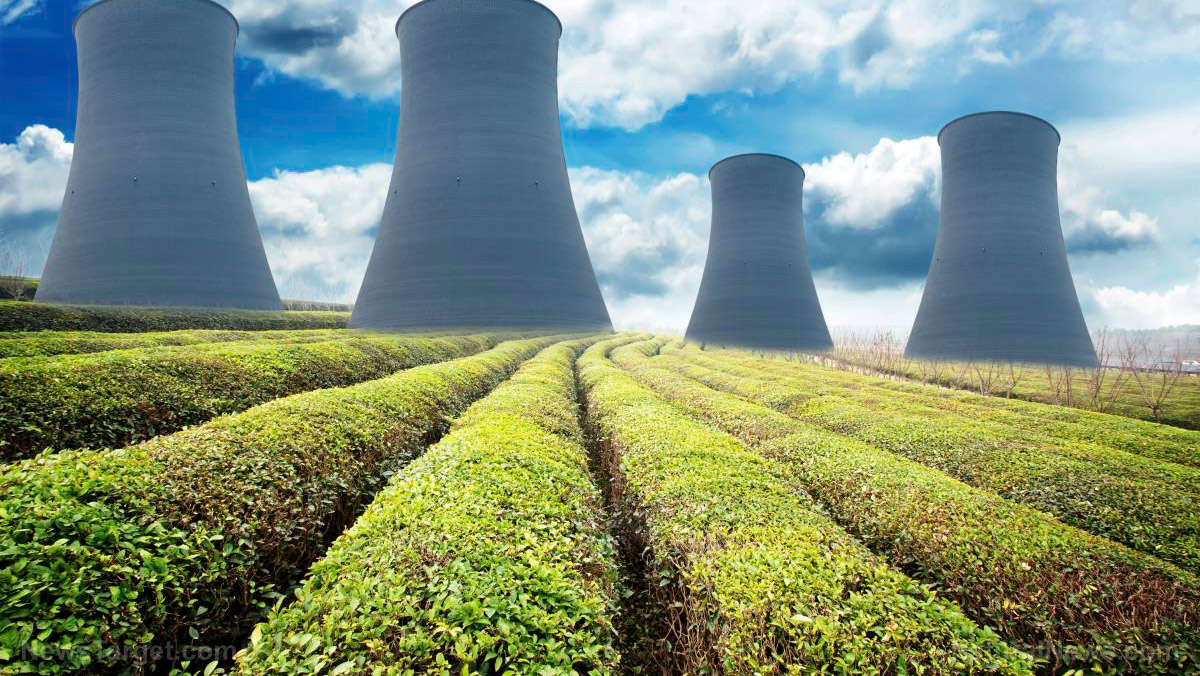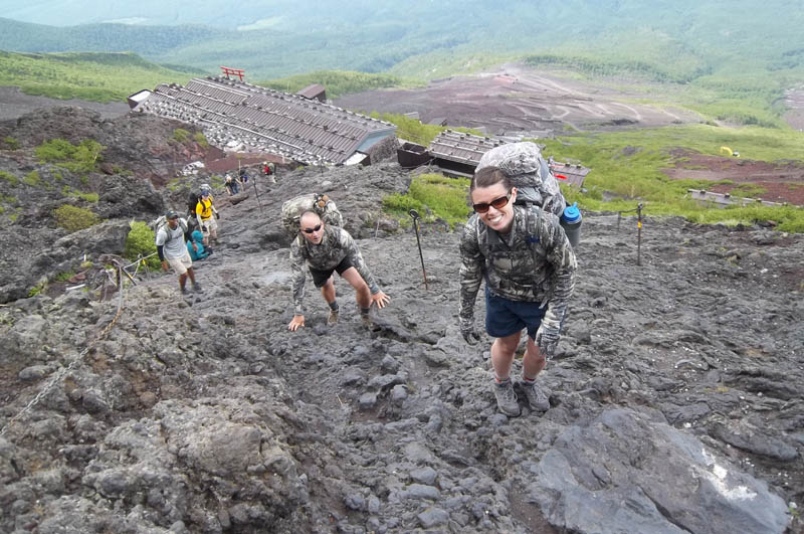 Parler
Parler Gab
Gab
What is a hazmat suit?
A hazardous material or hazmat suit is a sealed garment designed to provide protection against different dangerous substances. It is also often called personal protective equipment (PPE) and is required in environments that will expose you to adverse conditions. People in law enforcement, firefighters, first responders, specialists and those who work in toxic environments often use hazmat suits. There are different grades of suits that guard against different types of substances. Extensive training is provided to those who wear hazmat suits due to the complexity and caution associated with them. (Related: CBRN defense and preparedness: How to be ready for a nuclear emergency.) Hazmat suits are broken down into individual parts that are sealed together to form a barrier for the wearer. The different pieces of a hazmat suit include:- Rubber boots – The boots are often made of thick rubber or touch plastic to protect against chemical exposure.
- Coveralls – Coveralls are often made of plastics like PVC since they are impervious to many biological chemicals.
- Gloves – Like hospital gloves, hazmat suit gloves are made of latex or nitrile material.
- Face shield – Face shields can include simple goggles or full-out masks and face shields.
- Respirator – Like a scuba diver respirator, a hazmat suit comes with a self-contained breathing apparatus and tank attached to the wearer.
How does a hazmat suit protect you?
Hazmat suits can help protect you against nuclear radiation, chemical substances (liquid and gaseous) and high temperatures, including fire. They help protect the sensitive areas of your body, like your eyes and lungs, from contamination. Additionally, hazmat suits are sealed at the seams to protect against gaseous compounds. Each hazmat suit has its own rating so you must get the right one for the job.Hazmat suits and radiation
Radiation exposure affects you in two ways: irradiation and contamination. Irradiation occurs when your body absorbs radiation from the environment. Fortunately, there are materials that can help prevent this with special shielding using lead or iridium. Meanwhile, contamination refers to when your body is exposed to radioactive particles in the environment. This is bad, especially if you inhale some of the matter. In this case, you need an air filter. Hazmat suits also help prevent you from transmitting the particles you are exposed to and contaminating the areas you are in. Note that the combination of metal shielding and high-quality air filtration that will lessen the effects of radiation exposure in specialized suits can get quite expensive.Hazmat suits and fire protection
Firefighters usually wear hazmat suits meant for fire protection since when they are in a burning building, they are exposed to toxic chemicals in the air which can impair respiratory function. Full coverage is also important since corrosive chemicals and fire can harm firefighters if their skin is exposed. Their suits come with an anti-fog mask and an oxygen tank. Fire-retardant chemicals and materials are applied to the suit to ensure that a fire will not catch while they are dealing with fires. These protective chemicals and materials can also act as a temperature barrier since the environment is hotter than normal.4 Types of hazmat suits
The U.S. follows a different regulatory system when it comes to the levels of protection that hazmat suits are identified by. In America, there is a letter grading system from A to D while in Europe a numbering system (Levels 1-6) is used. Level A hazardous material suits completely enclose the wearer from the environment and comes with a respirator. Level D is technically not a hazmat suit, but it requires PPE to protect the eyes and body, like a pair of glasses and an apron. Here are the four different kinds of hazmat suits used in the United States: Level A- A gas-tight sealed suit.
- Has a positive pressurized oxygen tank on the outside.
- Comes with a full respirator under the face mask.
- Has a chemical-resistant inner layer and steel-toed boots.
- Offers the highest level of protection when SHTF.
- Not gas sealed.
- Can be fully or partially closed.
- Comes with an oxygen tank that is either inside or outside of the suit.
- Helps protect against chemical splashes, but not gasses.
- Not gas sealed.
- You can use a gas mask or air-purifying respirator but it doesn't come with a tank.
- Has a hard hat.
- Firefighter gear is typically Level C since it offers heat and chemical protection.
- Doesn't require a respirator or other breathing apparatus.
- Includes an apron, goggles and rubber gloves.
- Use this when there is minimal danger of chemical exposure.
Emergency response levels and hazmat suits
The National Fire Protection Association (NFPA) is a global body that aims to eliminate death by hazardous conditions. The NFPA is responsible for public education and standards used concerning hazmat situations. The association's codes are designed to minimize workplace risks. The NFPA created emergency response levels to help differentiate between hazmat scenarios. These levels also help people identify what equipment is needed for a specific scenario. The three levels in the emergency response system vary in severity and equipment needed: Level 1- Presents the least amount of risk.
- The hazardous substance can easily be contained with local resources, like a house fire.
- Often requires cooperation from multiple agencies.
- May potentially have long-lasting public effects, like a pandemic.
- Usually requires the collaboration of all local, federal and state resources.
- Often causes long-term damage that is catastrophic, like a nuclear disaster.
Tips for choosing the right hazmat suit
Before selecting the right hazmat suit for you, you must understand the task that you need it for. Here are some questions to ask yourself before choosing a hazmat suit when SHTF:- What are you protecting yourself from? Is it chemicals, gas, or a nuclear threat?
- Who will wear the hazmat suit? Factors like gender, height, weight, or other conditions affect who can wear the suit.
- What is the activity that you will be doing? How long do you need to be in the suit? Will you be staying in a confined space? Are you entering the area with other people?
- Are there additional requirements, like other kinds of protective gear?
- Yellow – Yellow hazmat suits are often used in public emergencies. Yellow is the color of caution, which people easily identify, and it can be spotted easily. Yellow hazmat suits are often worn by people working with hazardous materials.
- Red – Level A hazmat suits are usually red and the color commonly represents danger. Red hazmat suits help alert others to danger and to leave the area.
- Blue – Blue hazmat suits are often used in biological labs or places with dangerous chemicals. Blue is associated with medical scenarios.
- Silver – Silver hazmat suits are used by geologists working near volcanoes. The silver material is a type of foil that helps reflect heat.
- White – White hazmat suits are commonly used in medical scenarios and hospitals. Designed to promote a sense of calm, white is often worn in medical situations, like when health experts are handling cases of infectious diseases.
- Orange – Orange hazmat suits are used by people who work in contracting around insulation, specifically asbestos remediation or spray foam applications. The suit helps protect against construction materials.
More related stories:
Survival essentials: 10 Emergency supply tips for preppers. Personal safety and survival: 15 Things to do after an EMP attack. How to prepare for an EMP threat. Sources include: UrbanSurvivalSite.com SelectSafety.net Brighteon.comHalf of France’s nuclear power plants are offline as dark winter approaches
By Ethan Huff // Share
12 Food preservation and food storage techniques you can use when SHTF
By Zoey Sky // Share
Survival basics: 10 Ways to deal with fuel scarcity in a post-SHTF world
By Zoey Sky // Share
Prep With Mike: Bugging out is better than staying in an apartment during a collapse
By Kevin Hughes // Share
Governments continue to obscure COVID-19 vaccine data amid rising concerns over excess deaths
By patricklewis // Share
Tech giant Microsoft backs EXTINCTION with its support of carbon capture programs
By ramontomeydw // Share
Germany to resume arms exports to Israel despite repeated ceasefire violations
By isabelle // Share










